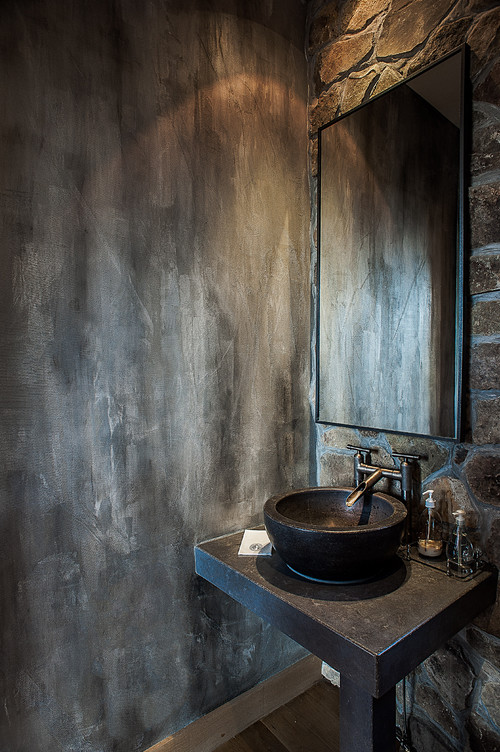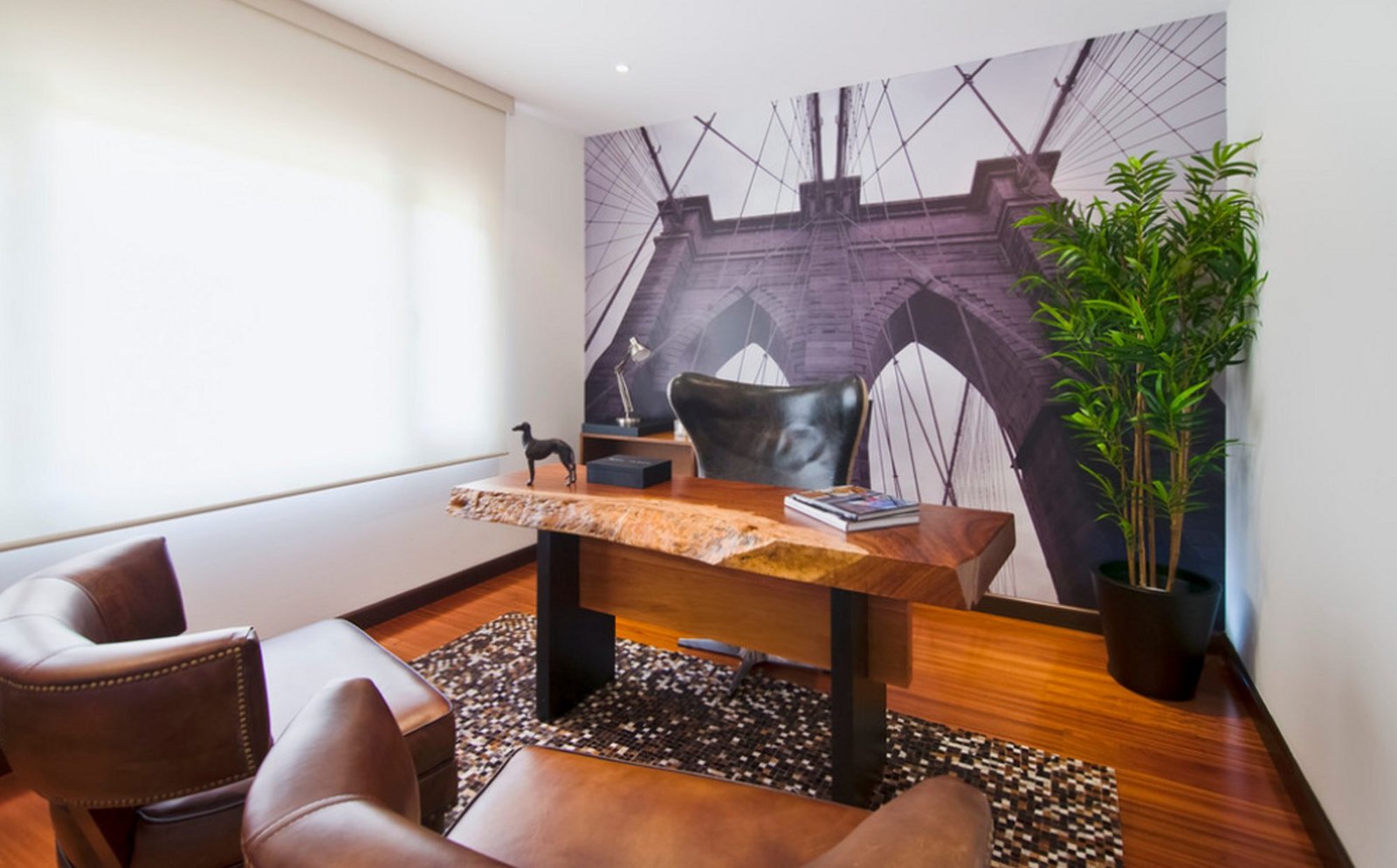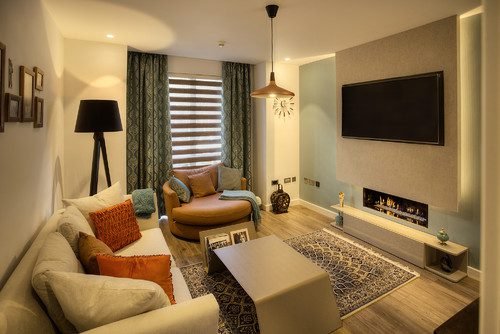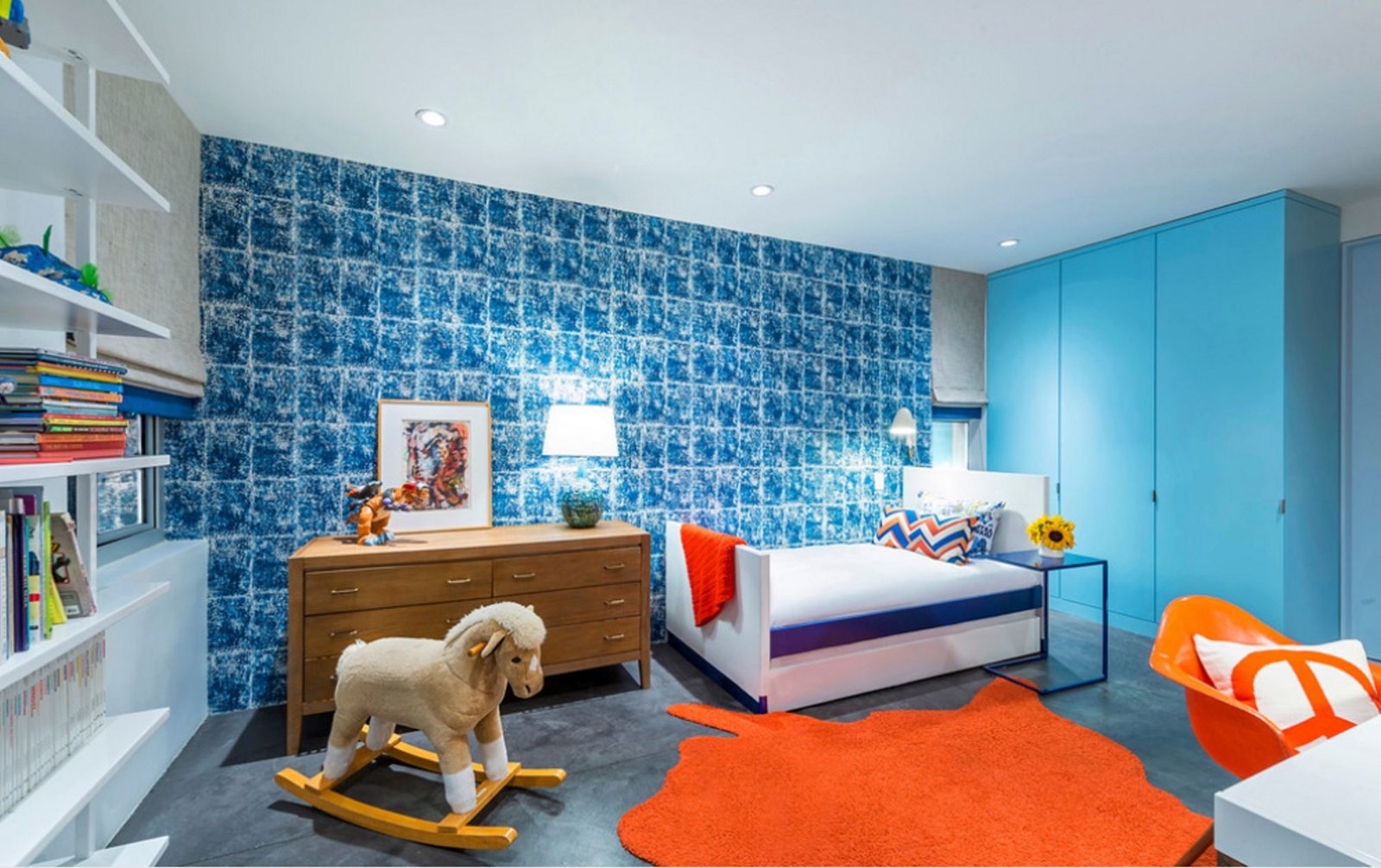If you are tired of the same old paint colors, adding a vibrant new look with “Decorative Faux Painting” can transform and beautify any room.
In fact, faux finish painting, or using techniques and materials on one surface to imitate or suggest another surface, has been around for thousands of years. However, today’s faux paint finishing products and innovative techniques allow beginners to the highly skilled to create visual interest.

Photo by Artstar Custom Paintworks – Search powder room pictures
Finish faux offer a number of different techniques to choose from. Some faux techniques are more difficult to implement than others. No matter which technique you apply, it is always best to practice on a surface that you do not mind messing up.
Faux Painting Finish Techniques
Basically, faux paint finishes are created by using whatever might be at hand, crumpled rags, newspapers, sponge, or specially designed tools to produce specific results with paints and glazes.
Faux finishing is also, a process that involves adding water or glaze to a latex or alkyd paint. Applying the diluted glaze mixture to a wall, will then give you the viewer, the impression of layers. Along with the look of layers, comes an added textured feel. More skillful applications can create realistic imitations, like marble, stone or bamboo that’s difficult to tell from the real thing.
Venetian Stucco – A Decorative Painting Type (howtobuildahouseblog.com)
Wall preparation for faux painting:
When it comes to wall preparation for faux painting, hardly any wall is ready to immediately start working on. If you don’t have a good, smooth surface to work on, then minor bumps or nicks on the walls can be exaggerated by some faux painting techniques.
1. The wallpaper on the wall needs to be removed.
2. Any holes needs to be patched.
3. You should use primer:
– If you are putting your finish over a new wall that has never been painted
– If you are working on a wall that has a glossy surface
– If you are painting or finishing over existing wallpaper
– If your wall has been skimmed or extensively patched
Sponging and Ragging: Sponging and ragging are still among the most popular faux painting techniques. They owe their popularity to being not only among the first do-it-yourself faux finishing techniques but easy as well.
Sponging uses various textures and sizes of sponges to dab glaze or translucent paint onto a base coat in heavier or lighter amounts. You can buy alkyd (oil) paint and glaze for a sponging project if you would like. Oil does have the advantage of setting up slower alkyd also has better transparency, giving alkyd colors a richer feel.
Ragging called rag-rolling, ragging on or ragging off, this process involves using a bunched-up cloth to roll, blot or dab glaze off a base coat.
Color Washing: This method uses a towel or other cloth to apply a semitransparent glaze in a swirling motion as thinly or as thickly as desired over a base coat.
Combing: The teeth of a plastic or cardboard comb are pulled across wet paint to create wavy or cross-hatched patterns.
Stippling, Spattering or Speckling: Each is a bit different but basically the techniques involve applying random small dots of paint on top of a base coat. This can be accomplished by brushing across a mesh screen or flicking the paint off the brush with your fingers among others. Another brush is then used to flatten or pick up any over-application.
Color Blending: It is simply gorgeous. Regardless of what you’ve observed in the past, or what you think you know about color-blending faux-finish, the technique in this book is unique and proven. Preparing the paint so that the edges stay wet and workable, giving you time to employ the brush stroke that we’ll teach you and that guarantees success.
There are many others painting techniques such as: Plastique, Leather and Stripes, Single-Process Strie, Double-Process Strie or Striping.
Choosing Your Paint Colours for Faux Finish Painting Techniques
Choosing the paint colors for the faux finish on your walls can be one of the most difficult decisions to make when embarking on a faux painting project.
A great place to start in choosing your paint colors is to match any colors that appear in the existing decor of the room, whether they are found in the tile, curtains, bedspreads or even bathroom accessories. Using at least two paint colors is preferable. By incorporating the 3 colors on the wall, it brought unity and sense to the existing features.
Your faux finish paint will be remarkable if you go with a contrasting paint color. This works great, especially when you have solid color fixtures or furniture. In other words, if you have a solid brown sofa with solid brown curtains, you don’t want to faux paint a brown paint color on the wall. Rather, you should choose a contrasting green or golden color.
Don’t be afraid of adding dramatic colors to your walls.
Right Tools for the Right Job
Ensure that you have the right tools for the right job. In choosing your faux finish and the faux painting tools you are going to use, keep in mind that in small sections or tight areas, the tools might not fit. Therefore, it’s best to keep those patterned faux finishes to walls that don’t have too many fixtures on them.
Tips
1. Besides magazines and TV shows, look to decorators and paint manufacturers for ideas and services. Manufacturers have specialty finishes that add texture, dimension, light-reflecting abilities and depth to the paint that may need a more skillful hand.
2. When doing a faux finish, don’t be afraid to experiment with different things like. Newspapers crumpled up or wrinkled plastic etc. for many kinds of finishes. Also always start with a base color and go over that with a different colored glaze usually in the same hues.
3. When painting indoors take precautions to ensure the indoor air quality of the home does not decline. However, there are many paints available on the market today that ease the homeowner concerns over volatile organic compounds, off-gassing and other indoor air pollutants.


